Why do joints hurt? With such a question, many patients go to the doctor or try to look for an answer on their own. Unfortunately, this complaint is not specific and can indicate a pathology with different mechanisms and causes of development.
We will try to identify the most common causes of joint pain and how to treat common diseases.
symptoms
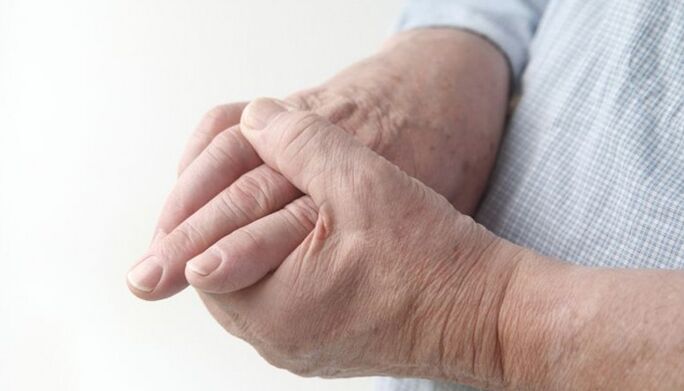
Before analyzing the immediate causes of pain, it is worth considering the symptoms of diseases of the musculoskeletal system in more detail. The doctor, starting a diagnostic search, will find out exactly how the joints hurt - so the specialist will quickly find the causes of the disease.
Due to the nature of sensations, pain can be:
- Pain.
- To cut.
- demolition.
- compressing.
Pain in the joints of the arms and legs varies in intensity. Pulling, weak pain indicates chronic diseases. If the joints are very painful, the sensations do not allow you to make movements, then the process is acute.
rhythm of pain

The symptoms of all diseases of the wrists and ankles can be classified according to the rhythm of the pain: mechanical or inflammatory. Mechanical pain has the following characteristics:
- Grows in the evening.
- Morning stiffness is not typical.
- Strongly felt after training.
- At rest, the pain is painful or absent altogether.
- Begin - a certain type of pain at the time of the beginning of the movement.
The inflammatory rhythm is characteristic of synovitis of the joints of the arms and legs of various origins. The symptoms are as follows:
- Morning stiffness of the body or certain parts of the arms and legs for more than 30 minutes.
- The pain increases at night and early in the morning.
- With movements, the symptoms become less intense, the stiffness of the body decreases.
- In this rhythm of pain from body stiffness and pain, anti-inflammatory drugs work well.
other symptoms
Pain in the joints of the arms and legs is accompanied by certain manifestations, depending on the cause of development. Why joint pain occurs can often be determined by additional symptoms:
- Restricted movement of arms or legs.
- stiffness of the limbs.
- Swelling in the joints of the arms and legs (elbow joint swelling).
- Local fever and reddening of the skin.
- General weakness, fever.
- Visible skin lesions on arms, legs, trunk.
- Manifestations from other organs.
Depending on what symptoms accompany pain in the joints of the arms and legs, the doctor will determine why the disease appeared.
diseases of the joints
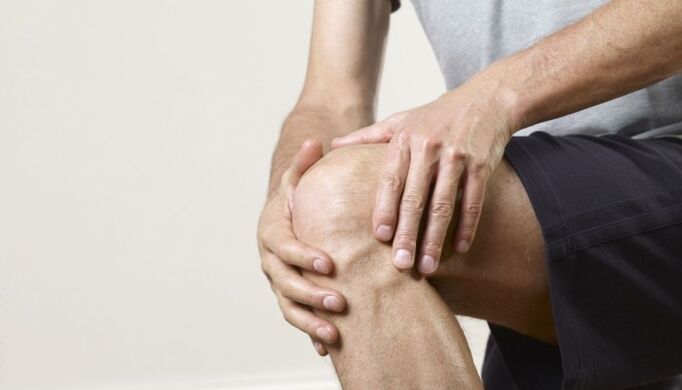
Pain in the joints of the arms and legs can be caused by diseases that are completely different in origin and mechanism of development. However, the most common causes of such symptoms can be identified:
- Osteoarthritis is a degenerative disease of cartilage and bone tissue. The pain in the joints is of a mechanical nature, during the period of exacerbation an inflammatory component is added.
- Rheumatoid arthritis is an autoimmune disease that occurs when the body's immune system cells attack the joint. Joint pain has a clearly inflammatory rhythm.
- Reactive arthritis is inflammation caused by an infection in another organ. Often occurs with hepatitis and urinary tract infections.
- Infectious arthritis - associated with the penetration of microbes into the joint.
- injuries and fractures. Diagnosis is not difficult due to the presence of trauma in the anamnesis.
- Damage to ligaments and intra-articular formations. The soft structures of the joints also cause joint pain when damaged.
- Rheumatic diseases. A large group of causes causing autoimmune damage to the joints: systemic lupus erythematosus, rheumatism, ankylosing spondylitis, Reiter's syndrome and others.
- Gout and other metabolic arthropathies. Often symptoms of damage to the musculoskeletal system are associated with the deposition of various pathological substances in the joints. Gout is caused by salts of uric acid.
- Psoriatic arthritis - the cause of this disease is unknown. Antibodies from your own body attack the tissues of the joints, internal organs and skin. A common manifestation of the disease is dermatitis - skin detachment on the extensor surfaces of the limbs.
This list represents the most common causes of musculoskeletal disorders.
Joint pain can also be caused by vascular and neurological diseases. The treating physician must determine the definitive cause.
Diseases of the knee joints
Knee pain is one of the most commonly reported complaints to a rheumatologist. Why does the knee hurt? This element of the musculoskeletal system endures enormous loads on the entire body every day, performs a wide range of movements and has a complex structure.
The knee joint hurts in various diseases, some of which have already been listed above, others are specific to this joint.
"Knees hurt: how to get rid of it? "- First of all, consult a doctor. Instrumental diagnostics will help to find out why the knees hurt, but a tentative diagnosis is made based on complaints and examination.
Pain in the knee joint most often occurs for the following reasons:
- Gonarthrosis - arthrosis of the knee joint. This cause is the most common mechanism for knee pain. The joint is subjected to daily stress, which is the main risk factor for osteoarthritis.
- meniscopathy. Menisci are layers of cartilage in a joint. In the case of a knee injury, it is often these structures that are damaged. Joints hurt a lot with meniscopathy, pain occurs when you try to move. Treatment of pathology is operative.
- Arthritis of various origins. Pain in the knee joint with arthritis is inflammatory in nature, it can be associated with infection of the joint itself or another organ. Knee joint pain can also occur with rheumatoid arthritis and other autoimmune diseases.
- Gout. The knee joint is not the most common site of gouty arthritis. But this joint can still be affected by the disease. Pain in the knees is accompanied by subcutaneous tophi, an increase in the level of uric acid in the blood.
- Inflammation of the tendons - tendonitis. Pain in the knee joint is very often associated with soft tissue damage. When microtrauma occurs in the tendon or ligament, knee pain associated with a local inflammatory response occurs. Symptoms are aggravated by physical exertion.
- circulatory disorders. Vascular thrombosis, thrombophlebitis, varicose veins can cause pain in the knee. These problems are common in postmenopausal women, as well as in people who put a lot of stress on the joint.
- Baker's cyst and other disorders of the articular sac. The knee joint has a complex structure, its synovial membrane has inversions and pockets. Knee pain can be caused by local inflammation of the joint capsule or accumulation of inflammatory fluid in the back of the knee.
- tumors. Neoplasms rarely involve the articulation area. Most often, knee pain associated with tumor growth occurs when there are metastases from another organ in the joint. In this case, the diagnosis is known and oncological treatment is already underway.
With these and other diseases, a person's knees hurt, what to do in a specific situation, the attending physician will tell you.
Pain in the knees is not always a sign of a serious pathology, but concern for your health is not superfluous.
diagnosis
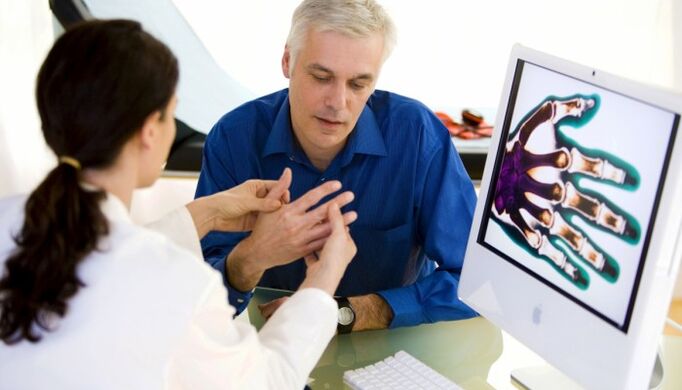
Before prescribing any treatment for joint pain, the doctor must make a definitive diagnosis. To do this, he performs several mandatory diagnostic procedures. The audit standard includes:
- General analysis of blood and urine - indicates the presence or absence of an inflammatory reaction.
- Biochemical blood test - evaluates the functioning of the liver and kidneys, the state of protein, fat and carbohydrate metabolism.
- X-ray of the affected joints. X-ray is performed in several projections and allows to detect bone pathologies.
Unfortunately, in most cases, these examination methods are not sufficient to make a diagnosis. In this case, additional methods are used:
- Computed tomography - allows you to detect even the smallest damage to bone tissue.
- Magnetic resonance imaging - the method perfectly visualizes all soft tissues, including ligaments and menisci, tumors, cysts and other pathological formations.
- Ultrasound of the joints - detects abdominal and solid pathological formations, can measure the speed of blood flow in the vessels.
- Arthroscopy is the insertion of a camera into the joint cavity. One of the most accurate research methods.
- Diagnostic puncture - a liquid is drawn from the articular cavity into the syringe, which undergoes an examination.
With these diagnostic tools, you are more likely to make the correct diagnosis. Many procedures are expensive or have contraindications, so the need for research is determined individually.
treatment
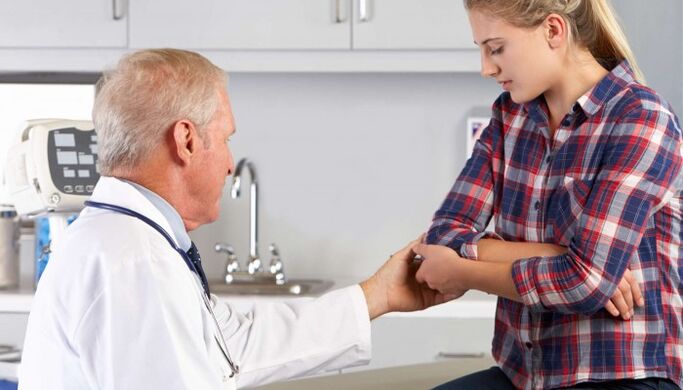
How are joints treated? For joint pain, there are a large number of remedies, techniques and folk recipes. The doctor treating you will help you to select the right therapy methods.
All means and methods of therapeutic effects can be divided into several groups, each of which will be discussed below.
Medication
In the case of joint pain, medication is often used exclusively. This is not the right approach, it is better to use complex treatment. However, drugs play a key role in this.
The most commonly used drugs:
- Non-steroidal anti-inflammatory drugs.
- Non-narcotic and opioid analgesics.
- muscle relaxants.
- glucocorticosteroids.
- chondroprotectors.
- cytostatics.
- vitamins.
From what each specific drug helps, the attending physician should explain to the patient.
With vascular diseases, other drugs are prescribed. If you have diseases of the vessels of the lower extremities and at the same time the joints of the legs hurt, what to do and what treatment to choose, the attending physician decides.
physical therapy
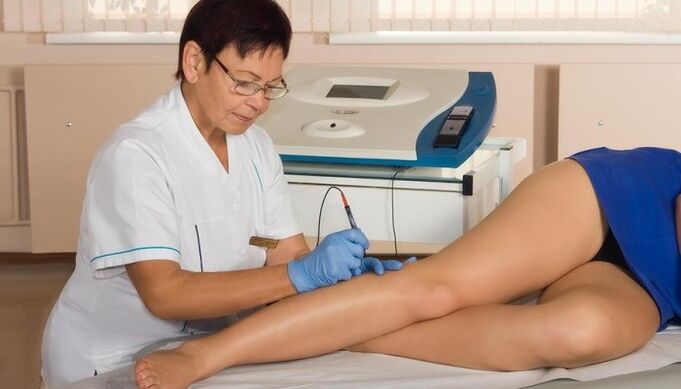
The use of various physiotherapeutic procedures supplements the medical treatment.
The following techniques help with joint pain:
- electrophoresis.
- phonophoresis.
- Acupuncture.
- paraffin applications.
- Rodon Baths.
- mud therapy.
- magnetotherapy.
Using these and other techniques, you can increase blood flow to the affected joint, reduce swelling and increase the intensity of metabolic processes.
Therapeutic immobilization
Therapeutic immobilization is often prescribed for joint pain in the acute phase. With this method, bandages, corsets and orthoses are worn on the affected joint.
You cannot use the bandage for a long time because the muscles under the orthotic design atrophy from inactivity. In the case of heavy loads, however, the support of immobilization products makes a lot of sense.
exercise therapy

Physical therapy plays a key role in the treatment of all pathological processes in the musculoskeletal system. Gymnastics allow you to adapt the joint to the load, restore muscle strength, improve blood circulation and reduce swelling.
The intensity and duration of exercise largely depend on the type and severity of the condition. You need to start the exercises with breathing exercises, warming up small muscles.
Morning exercises for 20-30 minutes a day should be supplemented with swimming, Nordic walking and other aerobic activities.
massage
Massage procedures perfectly relieve the patient from joint pain. What is the massage method for? Procedures increase blood circulation, reduce swelling, relieve pain. You need to entrust the implementation of this procedure to a specialist and, after a series of exercises, undergo a massage.
surgery
The key role and sometimes the only role in the treatment of joint pathologies is surgical intervention. So, the consequences of injuries, severe degenerative diseases, complications of joint pathology are treated.
The operation can be performed in different volumes: from plastic to prosthetics of the affected joint. Indications for intervention are determined by the patient's attending physician together with the surgeon or traumatologist.
Treatment with folk remedies

Recipes of traditional medicine are still popular in our country. It should be said that treatment with folk remedies is not a proven method and is used by patients at their own peril and risk.
For the treatment of pathology of the musculoskeletal system, the following folk remedies are used:
- Bay leaf and cabbage compresses.
- Decoctions of sunflower roots.
- Ointment from a golden mustache.
- Application in eggshell.
- Compresses made from crushed chestnuts.
- Rye grains and other cereal structures in the form of decoctions.
- Cooked rice.
- Baking powder.
If you decide to use any of the recipes of traditional medicine, first consult your doctor.



























